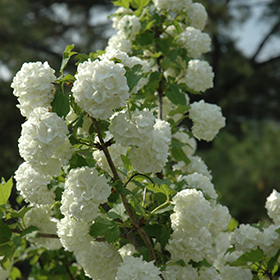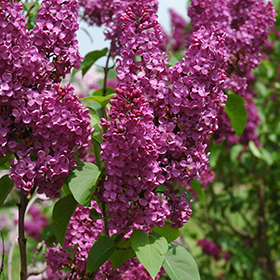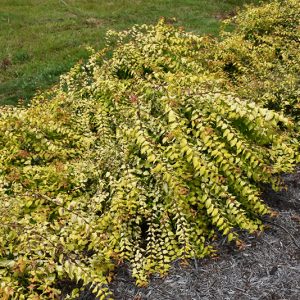Description
Growth & Care
| USDA Plant Hardiness Zone | 3a |
| Growth Rate | Average |
| Recommended Pruning Method | Prune After Flowering |
Foliage
| Foliage Type | Deciduous |
| Fall Color | Purple |
| Plant Form | Upright Spreading |
Flowers
| Flower Period | Spring |
| Flower Color | White |
| Flower Fragrance | Unscented |
Additional Categories
| Additional Category | Viburnum |
| Landscape Application | Accent, Massing, Garden |
Details
Planting & Growing
Snowball Viburnum will grow to be about 12 feet tall at maturity, with a spread of 10 feet. It tends to be a little leggy, with a typical clearance of 1 foot from the ground, and is suitable for planting under power lines. It grows at a medium rate, and under ideal conditions can be expected to live for 40 years or more.
This shrub does best in full sun to partial shade. It prefers to grow in average to moist conditions, and shouldn't be allowed to dry out. It is not particular as to soil type or pH. It is highly tolerant of urban pollution and will even thrive in inner city environments. This is a selected variety of a species not originally from North America.
Landscape Attributes
Snowball Viburnum is a multi-stemmed deciduous shrub with an upright spreading habit of growth. Its average texture blends into the landscape, but can be balanced by one or two finer or coarser trees or shrubs for an effective composition.
This shrub will require occasional maintenance and upkeep, and should only be pruned after flowering to avoid removing any of the current season's flowers. Deer don't particularly care for this plant and will usually leave it alone in favor of tastier treats. Gardeners should be aware of the following characteristic(s) that may warrant special consideration:
Insects
Snowball Viburnum is recommended for the following landscape applications:
Accent, Mass Planting, General Garden Use
Ornamental Features
Snowball Viburnum features showy balls of white flowers at the ends of the branches in late spring. It has dark green deciduous foliage. The large serrated lobed leaves turn an outstanding deep purple in the fall. The smooth gray bark and gold branches add an interesting dimension to the landscape.






